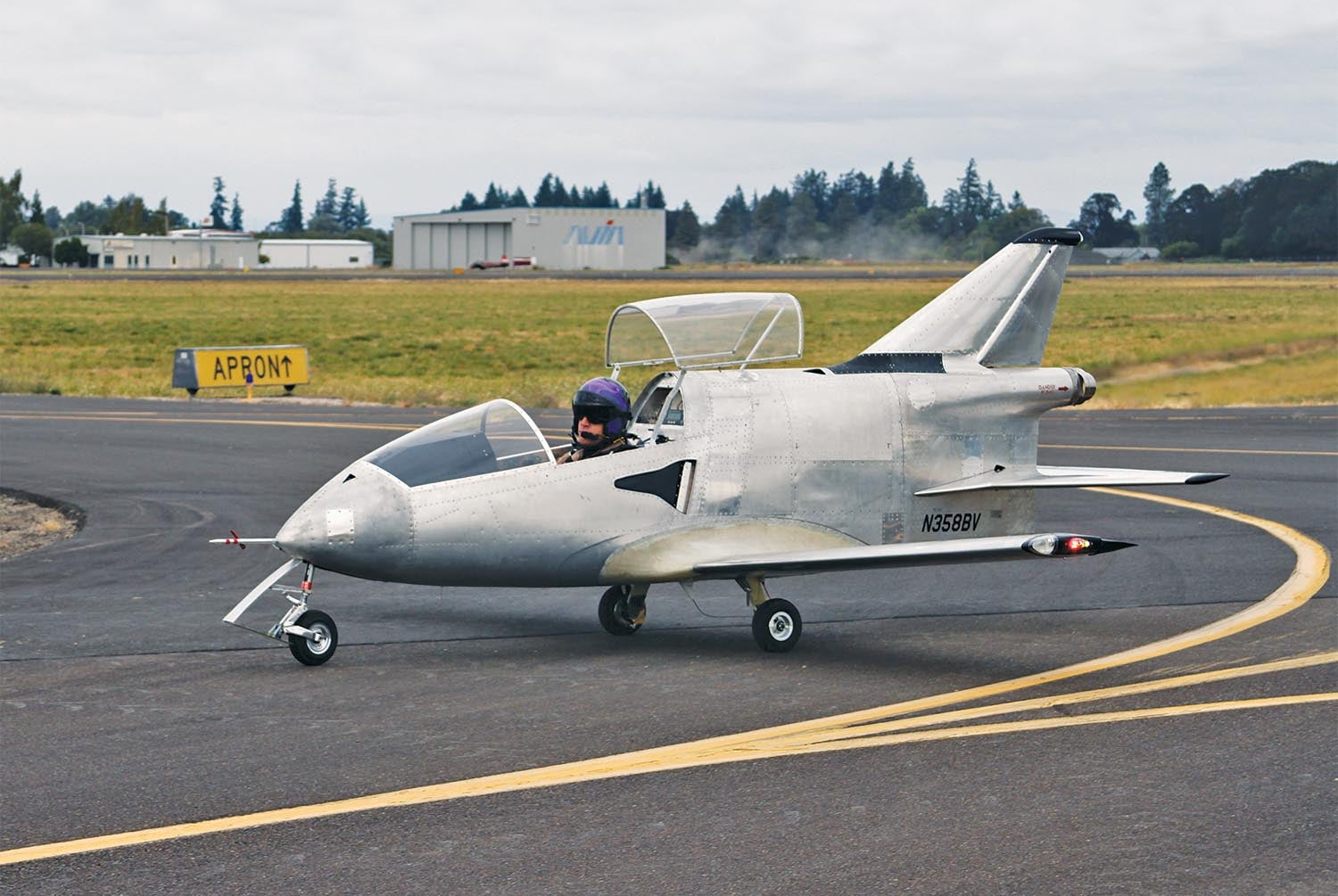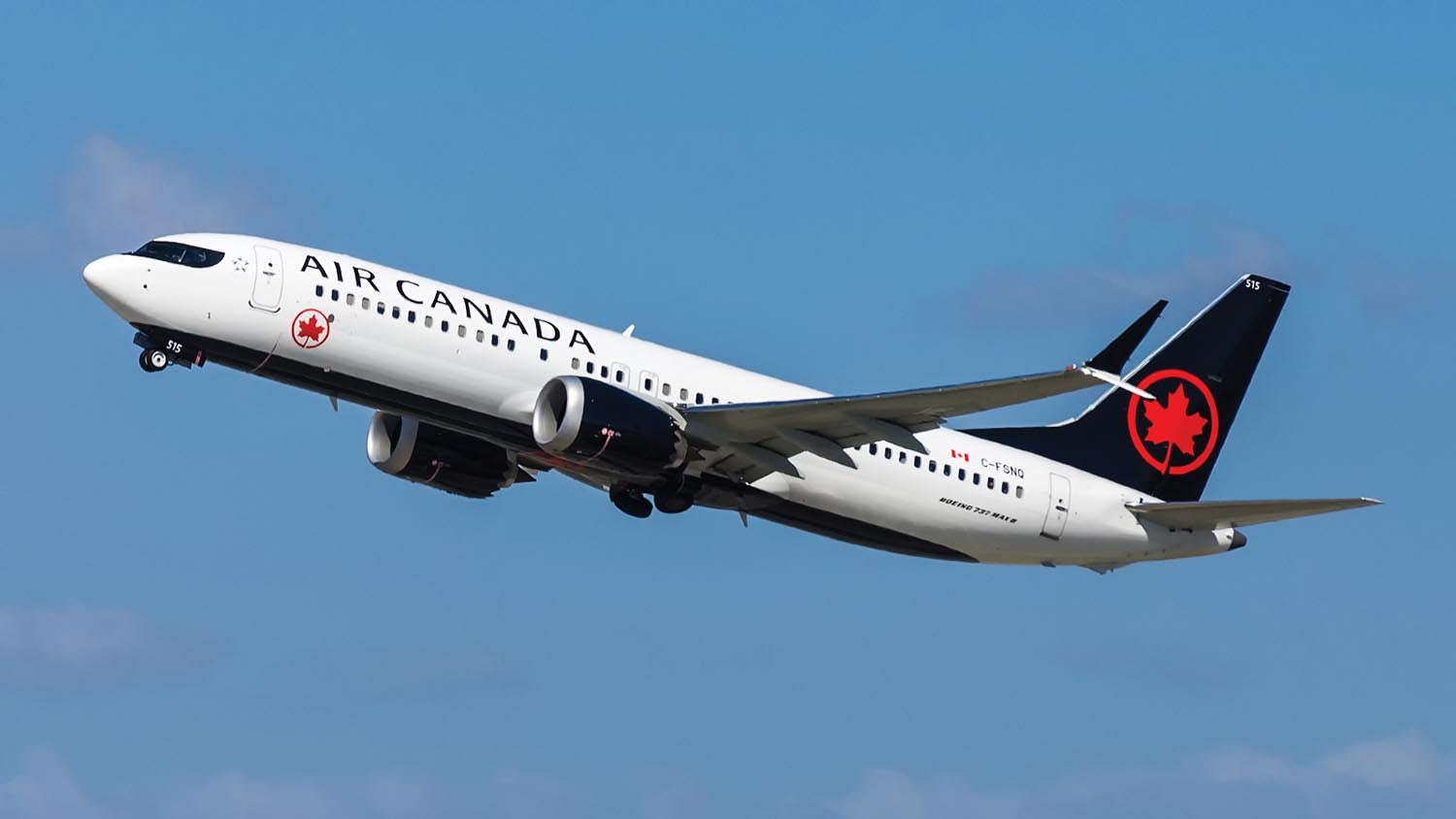
The propeller of an airplane generates thrust that drives it through the air. In addition to propelling the airplane, the thrust of the propeller affects both stability and trim. The relationship between the thrust line and the center of gravity can produce throttle-dependent effects on the trim of the airplane and also affects its stability.
Thrust Line
The thrust line is a line along which the thrust of the propeller acts. To the first order, the thrust line is coaxial with the axis of rotation of the prop and normal to the plane of the prop. Both the vertical position of the thrust line and the inclination of the thrust line relative to the centerline of the airplane affect how thrust will affect the stability, trim and control of the airplane.
Thrust-Induced Moment
When a force acts on a body, it will produce a moment about the center of gravity unless it is acting directly through the CG. The moment will be proportional to the thrust and the distance between the thrust line and the CG measured normal to the thrust line.
Equilibrium
When the airplane is in steady-state trimmed flight, the moments generated by the thrust are balanced out by aerodynamic moments generated by the flying surfaces of the airframe. If the thrust line does not pass directly through the CG, then the horizontal tail must generate an offsetting pitching moment to trim the airplane.
Throttle-Dependent Pitch Characteristics
When the pilot moves the throttle and changes the thrust of the propeller, it disturbs the equilibrium of the airplane. The thrust changes immediately when the throttle moves. Two things happen: Thrust no longer equals drag, so the airplane begins to accelerate or decelerate, and the thrust-induced pitching moment changes in response to the change in thrust.
Consider the case when the pilot increases power: The increase in thrust increases the moment being generated by the thrust of the propeller right away. At the instant of the thrust increase, the airplane begins to accelerate, but the airspeed has not yet increased in response to the thrust increase.
The aerodynamic moments counterbalancing the moment generated by the thrust do not change until the airspeed does unless the pilot moves the stick. This means that during the transient period when the airplane is accelerating, the moments will be out of balance and there will be a net moment in the direction of the thrust-induced moment.
If the thrust line passes above the center of gravity, then the initial throttle-induced transient will be nose down, and if the thrust line passes below the center of gravity, the initial transient will be nose up.
A reduction in thrust will produce the opposite effect: If the thrust line passes above the center of gravity then the initial throttle-reduction induced transient will be nose up, and if the thrust line passes below the center of gravity, the initial transient will be nose down.
This does not take into account the effect of the propeller slipstream flowing over the airframe. For example, the effect of the propeller slipstream over the tail can produce powerful throttle-induced effects that can either compensate for or amplify the direct effect of the thrust change.
Speed Stability
Power is equal to thrust times velocity. This means that at constant power, the thrust of a propeller is inversely proportional to airspeed. The faster the airplane goes the lower the thrust, and the slower the airplane goes the higher the thrust.
This change in thrust alters the thrust-induced moments. The faster the airplane is flying, the smaller the thrust-induced moments are. The slower the airplane flies, the bigger the thrust-induced moments are.
Aerodynamic moments also vary with airspeed. They are proportional to airspeed squared, so they increase as the airplane goes faster and decrease as the airplane slows. What this means is that starting from a trimmed equilibrium, if airspeed increases, the thrust-induced moment decreases and the aerodynamic moment increases. If airspeed decreases, thrust-induced moment increases and aerodynamic moment decreases.
This phenomenon affects what is called the speed stability of the airplane. If the thrust line passes above the center of gravity so that the thrust-induced moment is nose down, then the airframe must generate a nose-up aerodynamic moment to trim it.
In this situation, the thrust effect is stabilizing. As the airplane goes faster, the thrust-induced nose-down moment gets smaller and the aerodynamic nose-up moment gets bigger. This causes the airplane to nose up in response to an increase in airspeed.
It will also nose down in response to a decrease in airspeed as the thrust-induced nose-down moment gets larger and the aerodynamic nose-up moment gets smaller. This is a stable condition since the airplane will pitch in a direction that opposes the initial change in airspeed.
The opposite is true if the thrust line passes below the center of gravity. In this situation, the net thrust-induced moment is nose up and it must be trimmed by nose-down aerodynamic moment. As the airplane goes faster and the thrust decreases, the nose-up moment generated by the thrust also decreases while the nose-down aerodynamic moment increases. This will cause the aircraft to nose down and increase speed further.
A decrease in airspeed will cause the thrust-induced nose-up pitching moment to increase and the aerodynamic nose-down pitching moment to decrease, causing the airplane to nose up and decelerate. This is an unstable condition since the pitch response will be in a direction that amplifies the initial perturbation in airspeed. This speed stability effect is additional to the fundamental pitch stability of the aircraft, which is determined by how the aerodynamic moments change in response to a change in angle of attack.
Thrust-Induced Moment Issues
In general, excessively high thrust lines are more likely to cause problems than excessively low thrust lines. This is in part because there are useful configurations (like amphibians and pusher ultralights) that use high-mounted engines to keep the propeller clear of the surface or airplane components.
High Thrust Line
On an airplane with the thrust line significantly above the CG, high thrust and low airspeed tend to drive the nose down since it is difficult for the tail to generate enough moment trim to counter the thrust-induced moment. This can cause difficulties on takeoff and lead to a very dangerous hop-off phenomenon. If the tail cannot overcome the thrust-induced moment and rotates the airplane nose up at an airspeed below liftoff speed, then the airplane can get going fast on the runway at full-up or nearly full-up elevator. When the speed gets high enough for the tail to rotate the nose up, the rotation can be very abrupt and lead to the airplane lifting off suddenly with a high nose-up pitch rate. This phenomenon has caused several accidents in early flight testing of new designs with high thrust lines.
Up and away, a high thrust line adds to speed stability, but it can also lead to a dangerous condition if the engine loses power during initial climb. Because the thrust-induced moment is nose down, an engine failure will cause a sudden nose-up change in pitching moment along with the loss of thrust. This means the pilot will find themself in a situation where the nose is going up and the airspeed is already decaying due to the loss of thrust. This greatly increases the danger of a stall and loss of control of the airplane. This phenomenon was one contributor to the very poor safety record of the BD-5. The BD-5 had a high thrust line, an unreliable engine and sensitive controls and was very light so it had relatively little inertia to help maintain speed when thrust was lost. Several BD-5 accidents resulted from an engine failure on initial climb followed by a pitch-up and a stall.
This phenomenon can also be an issue for ultralight pushers with a high thrust line since they are lightweight and high drag so that airspeed will decay very rapidly in the event of an engine failure. A nose-up pitch transient caused by the loss of the thrust of a high-mounted pusher engine will exacerbate this unless the pilot pushes the nose down aggressively in response to a loss of power.

Low Thrust Line
While problems induced by low thrust lines are rare, there is one notable recent example. The Boeing 737 MAX initially exhibited a thrust-induced pitch-up when approaching a stall in the flaps-up configuration. Boeing responded to this by incorporating an automatic trim system to compensate for the pitch-up. This system had a failure mode that caused two serious accidents and led to the grounding of the MAX until the system was redesigned to eliminate this failure mode and recertified.














Thank you for the authoritative views on this complex subject, Mr. Wainfan. I’ve flown an R/C 5 meter composite sailplane with a turbine engine mounted on top of the fuselage for about 20 years, and it exhibits all the characteristics you mention in the “high thrust line” section. The plane almost met its demise several times as I was learning what you so succinctly described here. My question: to avoid blasting high exhaust gases on the vertical fin, we fabricated a bifurcated exhaust system and while this may have saved the fin (structurally), i wonder if the accelerated flow of air over the top of the stab may be amplifying the pitch-down phenomenon at slow speeds, or is this not a factor? When the thrust line of the engine was modified (raised the back), the pitch-down lessened, but I’m not sure if this is from the new thrust line, less accelerated flow over the stab, or both. If there is no effect from the accelerated flow, I may try to figure out how to get the fin protected and do away with the bifurcated exhaust, because then at least I’ll have positive directional control at very low speed. As it is now, directional control on takeoff is a challenge, limited conditions have to be met for safety. Appreciate your thought. BTW, I found that takeoffs are much more pitch stable when power is reduced as the plane has met flying speed, but is still gaining speed. A high gain gyro helps too. It takes careful throttle management.
More important than the CG is the center of drag that causes the pitch up or pitch down moment with a high or low thrust line.